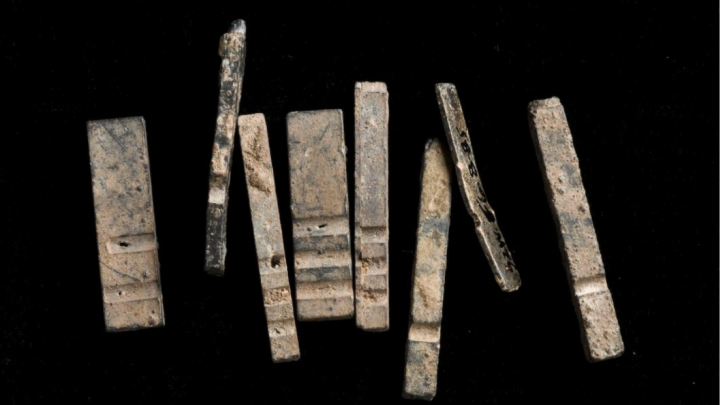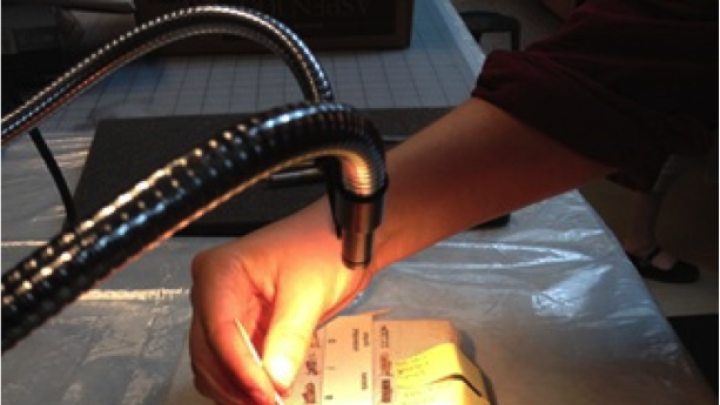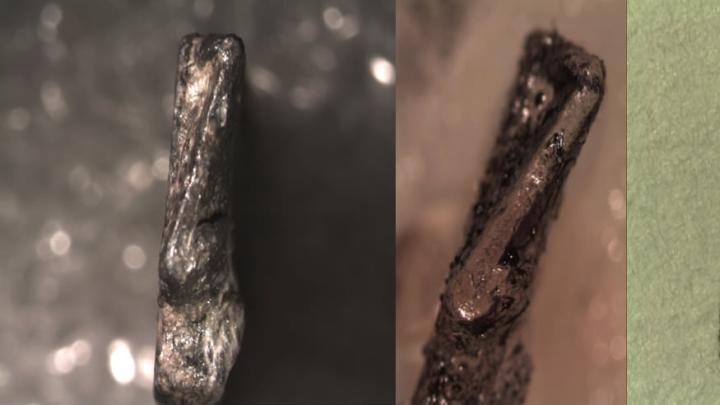Broken wine bottles, clay tobacco pipes, and fancy baubles—including, most recently, a pair of silver-alloy cufflinks: these are the small pieces of life at early Harvard that archaeologists have dug up during the last decade. Though archival accounts have long provided a basic history of early Harvard, “a real material understanding of that past—and a material understanding of colonial history—is something that didn’t exist until recently,” Diana Loren, a curator at the Peabody Museum of Archaeology and Ethnology, said at a museum event last Tuesday.
At the lecture, Loren and fellow curator Patricia Capone shared the latest findings from the Harvard Yard Archaeology Project, a decade-old effort that has focused largely on uncovering parts of the 1655 Harvard Indian College building. Plans for the Indian College were set out in the University’s 1650 charter, after the Society for the Propagation of the Gospel in New England offered the fledgling college money to aid in “the education of the English and Indian Youth of this Country in knowledge and Godliness.” In 2005, as the Harvard University Native American Program commemorated the Indian College’s 350th anniversary, the Harvard Yard Archaeology Project began digging down into that past (see “Pay Dirt in Yard Dig,” July-August 2008, page 80).
This fall, students in Anthropology 1120, “The Archaeology of Harvard Yard,” continued digging in front of Matthews Hall, confirming previous conjecture about the likely location of the building. They focused on the area around the suspected east wall of the Indian College, uncovering a layer of clay “underpinnings” that helped reinforce the marshy ground beneath Harvard’s first brick building. When she talks about the excavations, Loren explained in an interview after the event, “The one question that always comes up is, ‘What do you find that’s Indian?’” But in many ways, she continued, that’s the wrong thing to ask. The Indian College was conceived with a mission of “civilizing.” English and Native American students studied together, and all were training to become Puritan ministers. Four and a half feet below the ground, “it’s one big institutional hole,” Capone added.
This focus on religious conversion is why the big, “headliner artifacts” of the dig, Capone explained at Tuesday’s event, are the tiny pieces of lead type from the Indian College’s printing presses. Just four Native American students were known to have attended the Indian College in the seventeenth century, so the most significant instruments of Christianization that the building produced were books, not ministers. Two presses, including the first ever in operation in British North America, eventually stood in the Indian College building, where printers churned out tools of conversion, such as the first translations of the Bible into the Massachusset language, in the 1660s.
Each surviving fragment of these efforts is what Loren called a “little object that speaks loudly.” Including those discovered during earlier digs in the 1970s and 1980s, 28 pieces of type have been found around the Yard. Approximately 22 of these have been dated to the seventeenth century. In the last year, the Peabody has worked with collaborators to try to match these letters to surviving books from the Indian College’s presses. Last summer, Peabody interns carefully measured, molded, and cast copies of the pieces of type. After putting ink to paper, they conferred with Houghton Library’s Hofer curator of printing and graphic arts, Hope Mayo, in order to compare the impressions they made to the books in Houghton’s collections. Previous research efforts had already found likely matches, including a small italic “o” within the second edition of the Indian Bible and a larger italic “l” in the preface of The Indian Grammar Begun, according to Mayo. This year, interns working on the project took on the larger task of matching up most of the remaining letters.
Some of what historians know about the early history of these presses—including what was printed and who did the printing—comes from archival sources. Lining up archaeological evidence with the written record can provide both archaeologists and historians with more context. Matches between type pieces and books can help narrow down the dates for other objects found in the digs. Moreover, these objects are important cultural artifacts in their own right. The composition of the metal and the types of font used can be important data points, for example, for those interested in the history of printing. Looking at the books themselves, scholars have found that printing the Algonquian language required more Ks and Ws, as well as a specially cast piece of type—two side-by-side lowercase Os (oo)—that had to be sent from Europe. If future excavations could find one of those, “that would be the holy grail,” Mayo said.
For now, students are back in the lab, cataloging the finds of this year’s dig. (About 2,000 objects are turned up each season.) Only later will Loren and Capone start discussing where to move the dig next. They could choose another section of the Indian College building, or begin looking in a nearby area that was likely an open space between the Indian College and the Old College Building, which was built in 1639. Or they could shift their focus closer to the surface instead, and look to another era of Harvard’s history. “There’s still a lot of ground left uncovered,” Capone said at Tuesday’s talk. “The point is that archaeology is beneath our feet to a great extent, particularly in Harvard Yard.”










